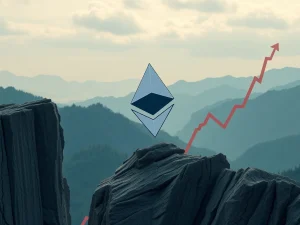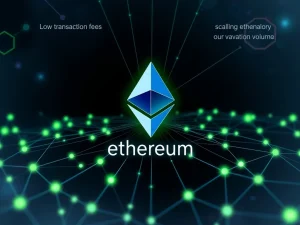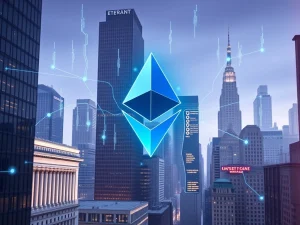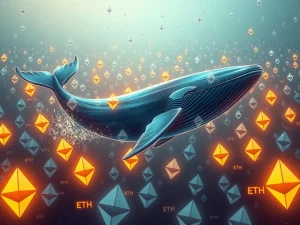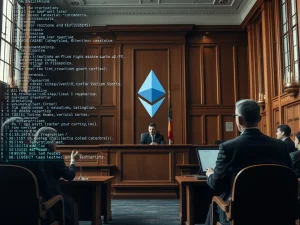Ethereum Fees Plunge to 5-Year Low: A Golden Opportunity?
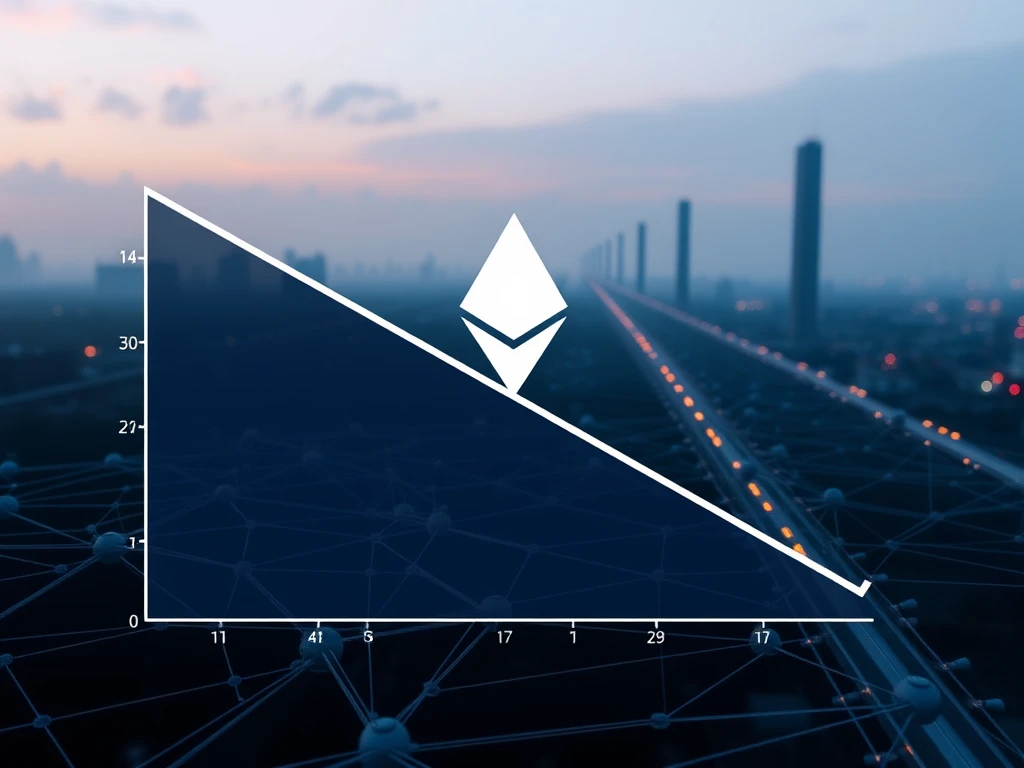
Exciting news for the Ethereum community! Have you noticed transactions becoming significantly cheaper lately? Well, you’re not imagining things. Ethereum fees have dramatically dropped, hitting their lowest point in five years! This remarkable decrease is attributed to a lull in network activity, offering a welcome respite for users who have long endured high gas costs. Let’s dive into what’s causing this fee dip and what it means for the future of Ethereum.
Why Are Ethereum Fees So Low Right Now?
According to Santiment, a leading on-chain analytics platform, the average transaction cost on the Ethereum network has plummeted to around $0.168. This is the most affordable it has been since 2020! Brian Quinlivan, Santiment’s marketing director, explains that this fee reduction is a direct result of decreased transaction volume. Think of it like rush hour traffic. When everyone is trying to use the Ethereum network at once, they bid up transaction fees to get their transactions processed faster. This creates high gas prices.
However, when network activity slows down, as it has recently, there’s less competition for block space. Users don’t need to offer high tips to miners, and consequently, the average Ethereum fees decrease significantly. It’s a simple case of supply and demand in action.
The Market Lull and Its Impact
Quinlivan points out that this period of low fees might be indicative of traders waiting for global economic uncertainties to settle before ramping up their trading activities. The market experienced a significant downturn following tariff announcements in April, and while there have been attempts at recovery, many assets, including ETH, are still below their previous highs. ETH itself has seen a dip, trading under $1,600 recently. This cautious market sentiment is reflected in the reduced transaction volume and, subsequently, the lower fees.
Is This Low Fee Environment a Golden Opportunity?
While low fees might signal a cautious market, they also present a fantastic opportunity. For developers, it means deploying and interacting with smart contracts becomes much more cost-effective. For users, it’s a chance to move ETH, participate in DeFi, and explore various decentralized applications without the burden of exorbitant gas costs. Imagine:
- More affordable DeFi participation: Engage in staking, lending, and yield farming with lower entry barriers.
- Cost-effective NFT trading: Buying, selling, and transferring NFTs becomes less expensive.
- Experimentation and innovation: Developers can test and deploy new applications without worrying about high gas expenses.
However, Quinlivan also suggests a word of caution, noting that from a trading perspective, sustained low fees can sometimes precede a price rebound. It indicates that the community might be leaning away from the asset, which, paradoxically, can set the stage for a surprise recovery when sentiment shifts.
Pectra Upgrade: A Ray of Hope for the Future
Looking ahead, the Ethereum network is gearing up for the Pectra upgrade, currently slated for May 7th. This upgrade is highly anticipated and promises further improvements to the network. Despite some initial hiccups during testnet activations, the development team is pushing forward. The Pectra upgrade is designed to tackle network congestion and further optimize Ethereum fees.
What to Expect from the Pectra Upgrade:
- Increased Layer-2 Blob Capacity: Phase one aims to double the blob capacity for layer-2 solutions, from three to six. This directly translates to reduced transaction fees and less network congestion, especially for rollups.
- Stablecoin Gas Payments: Imagine paying gas fees in stablecoins like USDC or DAI! Pectra is set to enable this, making transaction costs more predictable and user-friendly.
- Staking Limit Increase: The maximum staking limit will see a significant jump from 32 ETH to 2,048 ETH, potentially attracting more validators and strengthening network security.
Phase two of Pectra, expected in late 2025 or early 2026, will introduce even more advanced features to enhance data storage and scalability. These ongoing upgrades demonstrate Ethereum’s commitment to continuous improvement and addressing the challenges of scalability and cost.
Conclusion: Navigating the Low Fee Landscape
The current dip in Ethereum fees is a significant development, offering both opportunities and insights into market sentiment. While low fees make the network more accessible and affordable for users and developers, they also reflect a period of market caution. The upcoming Pectra upgrade is a beacon of hope, promising further enhancements to Ethereum’s performance and user experience. As the crypto market evolves, keeping an eye on these developments and understanding the dynamics of network congestion and fees will be crucial for navigating the ever-changing landscape of decentralized technologies. Is this low fee environment a sign of things to come, or a temporary lull before the next wave of activity? Only time will tell, but for now, enjoy the cheaper transactions!

